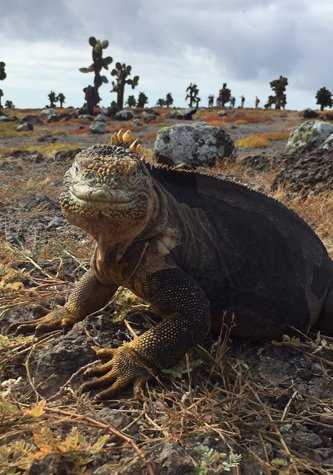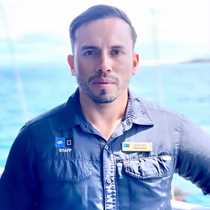We had a dry landing at South Plaza. This small island has an arid ecosystem that has turned into the perfect natural habitat of the land iguanas. Today they are found on six different islands, including South Plaza where they became the top herbivore. This island was uplifted from the bottom of the ocean floor millions of years ago and today serves as the habitat for yellow dragons, finches, cacti, colonies of sea lions and a large variety of vegetation, allowing the biological process of secondary succession to take place. The cliffs on these islands are bathed by breaking waves and they serve as a nesting ground for the Galapagos shear waters and Swallow tailed gulls which are seen flying overhead in search of food.
After lunch we dropped anchor and got ready to explore the visitor site on Santa Fe Island. While some of our guests went snorkeling, others went kayaking along the coast of Santa Fe. During the snorkeling outing we spotted many species of fish, diamond sting rays, yellow tailed razor surgeons, spotted eagle rays, Galapagos sharks, white tip reef sharks and we also saw several Green pacific sea turtles resting on the bottom of the ocean, some of them at their cleaning stations. Along the hike the highlight was spotting the Santa Fe land iguana, In fact we were lucky to spot around 4 of this rare species which is only found on this island. Some of the iguanas were very friendly and welcomed us into their habitat. The greenery of these islands was impressive compared to other lowlands on other islands we previously visited. We enjoyed the incense trees which had awakened since the last rainy season. A few baby leaves are a sign that light mist has been bathing the place with precious precipitation. Some cactus finches, mocking birds and many sea lions were part of the fauna of the visitor site. Some of us decided to stay at the beach to relax while being surrounded by a large colony of sea lions.







